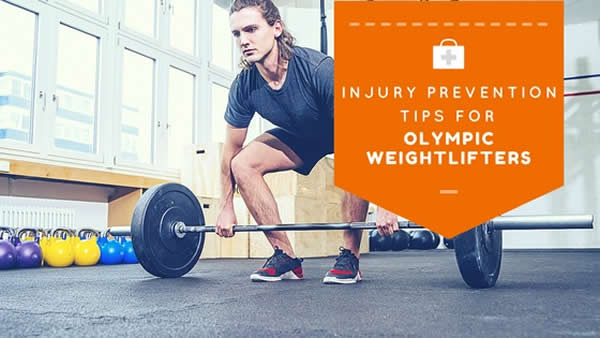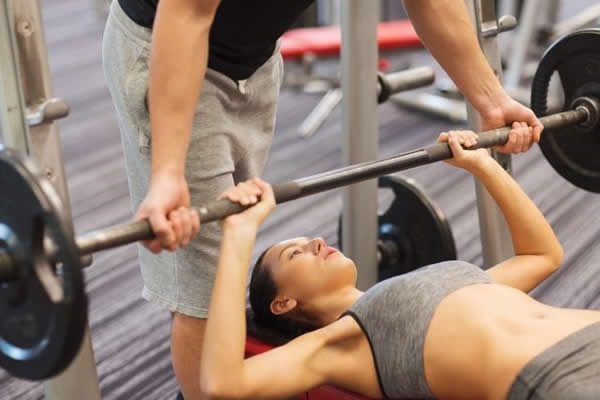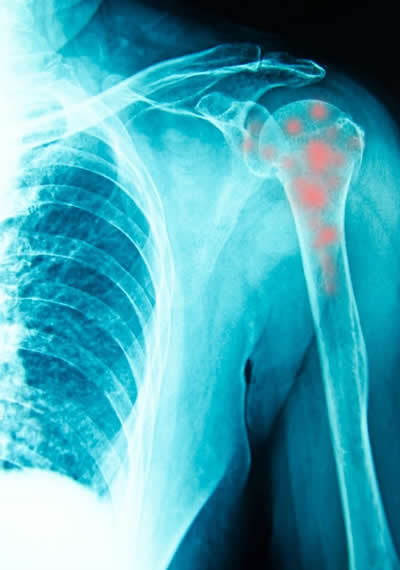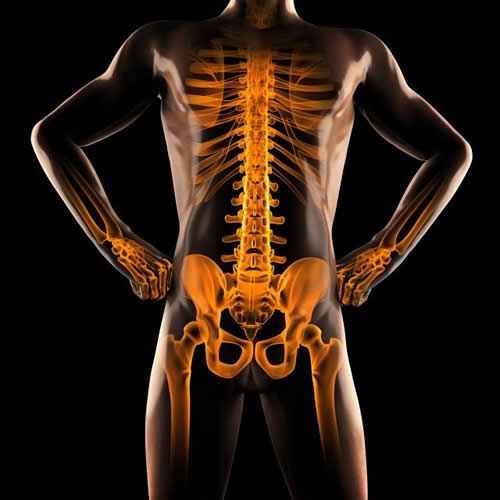Positive Health Online
Your Country

A Guide to Injury Prevention for Olympic Weightlifters
listed in exercise and fitness, originally published in issue 243 - January 2018
Republished with permission from origympersonaltrainercourses.co.uk

As a dedicated Olympic athlete, nothing is more disruptive than a threatening injury. An injury, more often than not, can set your progress back substantially and evaporate all of your hard work. However, this depends on the nature of the injury. That being said there are exercises that you may have overlooked within your current exercise program. You could (or should) integrate more effective but safer workouts into your routines so you can minimize the probability of injuries. Having a very active lifestyle does often result in wear and tear. This is the primary burden of practicing Olympic weightlifting. It comes with the territory and while it seems unavoidable, we believe that we can help.
All injuries fall into one of two categories, traumatic and cumulative
- Cumulative injuries are generally derived from repetitive wear and tear. A cumulative injury can be vastly amplified and it is more likely to continuously re-occur if your form is poor when performing exercises in the wrong posture. A cumulative injury is common among weightlifters. Someone who practises Olympic weightlifting most often strains when performing a snap or clean and jerk. These strains can cause damage to the muscle tissue of an individual. Due to the nature of a tear, weakened tissue can be torn again, this time much easier. This is why Olympic weightlifters often gain cumulative injuries;
- Traumatic injuries can also occur. People who practise Olympic weightlifting actually perform exercise that applies pressure on to the shoulders of their skeleton. This is why high intensity exercise or movement practised by Olympic weightlifters increase the probability of shoulder dislocation. Obviously, Olympic weightlifting is a dangerous sport because it requires great amount of exerted force from an athlete. Without correct form and posture, activities can often result in the occurrence of traumatic injuries.
Cumulative injuries are far common for Olympic weightlifters. They occur more often than traumatic injuries, which are far more common within contact sports such as Rugby. The repetitive nature of Olympic weightlifting is what causes these injuries. This is why we have addressed the two most common injuries. We intentionally developed this article with additional depth and evaluation so you can minimize damage while practising a variety of exercises.
Before we begin, I must emphasize the fact that not enough empirical evidence has been conducted to categorically identify injury prevention methods for a sport as new as Olympic weightlifting, especially in contrast to alternative sports and activities. For example, for a sport like long distance running there has been extensive research conducted by sport scientists who have successfully identified injury prevention exercises while also gathering substantial evidence that reinforces the need for injury prevention methods in not only long distance running, but all physical exercise. We can only conjecture a methodology for Olympic weightlifting based on a propensity for logic as well as an emulation of conventional principles from similar sports. By doing this we can deduce methodologies that will reduce the possibility of injury and prosper practitioners of Olympic weightlifters.

A study conducted by the British Medical Journal by Ulrika Asa and Ivar Svartholm reinforces this notion. They agree that limited research is endangering Olympic weightlifters careers and physiology. Within their study they conclude that “Since little has been studied regarding possible risk factors to injuries, further research is therefore warranted to explain why athletes get injured and how to prevent injuries.”While Asa and Syartholm’s conclusion is warranted, there has been progress within the field injury prevention. A substantial enquiry about the injuries incurred by a Olympic weightlifters was published by Calhoun (1999).
‘Injury rates and profiles of elite competitive weightlifters’ is a study that collected and analysed medical injury records of resident athletes also during numerous training camps to generate an injury profile. The study concludes, “The injuries typical to elite weightlifters are primarily overuse injuries, not traumatic injuries compromising joint integrity. These injury patterns and rates are similar to those reported for other sports and activities”. Not only does the study reference the probability of an Olympic weightlifter contracting a cumulative injury, it also highlights the points of weakness. These points of weakness include the knees, shoulders and lower back. During Calhoun’s study he deduced that for every 1000 minutes of physical engagement, a Olympic weightlifter will suffer an average of 3.30 lower back injuries.
The physical strain brought about by posture, pressure and regiment of Olympic weightlifting is problematic. This is why we have devised a guide of injury prevention exercises that will not only minimize the chances of injury for Olympic weightlifters, but also maximize performance during training and eventual competition.
During this article we will provide injury prevention exercises that can prevent the three of the most common injuries that Olympic weightlifters encounter. These include:
- PPS (Patellofemoral pain syndrome) within the knee;
- Shoulder impingement pain;
- Lumbar spine injury within the lower back.
Due to the mature of Olympic weightlifting these injuries occur often. However, follow these injury prevention exercise guides to minimize the threat of injury and carry on practizing your passion.

A. Patellofemoral (Knee) Pain Syndrome
Patellofemoral Pain Syndrome (PPS) occurs over a long period of time and it is your atypical injury incurred by an Olympic weightlifter. Olympic weightlifting involves a variety of pressuring movements such as squats, jerks and snatches. All of these movements place a huge amount of pressure on the kneecap.
The kneecap’s scientific name is the patella. The patella is a small flat triangular bone that is embedded in a tendon in the front of the knee. It slides along a groove across the front of the femur (thigh bone). It acts as a protective casing that protects the knee joint but it also adds leverage to the tendon by increasing its angle. This can be damaged when subjected to large amounts of pressure that can be exerted by incorrect positioning or involuntary movement.
Practising Olympic weightlifting via an improper mannerism can onset PPS. Early symptoms usually start with a minor ache when moving. It can then develop into a hindrance for even the most basic of everyday tasks, that are completely non-weight bearing.
PPS can also be caused by pre-determined weaknesses in the inner quadriceps as well as a lack of muscular stability within your hip flexors. Now that we understand the anatomical arrangement of the patella and how Olympic weightlifting can certainly damage it, we will explain how to prevent such injuries.
Ways to Prevent PPS
Footwear & Always Consult a Doctor
Firstly, ensure that you have the appropriate footwear before practising Olympic weightlifting. This should go without saying. Always consult a doctor if you begin to experience knee pain, they are a leading authority in physically therapy and they can correctly diagnose you. There are many knee related injuries and treatment varies depending on the type of injury that you have sustained, do not presume it is PPS.
Stretching & Strengthening Exercises
By incorporating a range of valuable stretches and strength exercise into your normal day-to-day gym routine, you will undoubtedly prevent the onset of injury in both a minor and major way. Incorporating these exercises also have many physical benefits that will also optimize your performance.
Muscles work in synchronization with their muscle groups. Therefore, any patella orientated stretches will directly correlate with the rest of your leg muscles and make you limber in your performance. Some of the exercises below would be ideal for Olympic weightlifters to practice. They will certainly prove beneficial:
1. Isometric Stretching of the Quadriceps
Isometric exercises are a type of strength training in which the joint angle in muscle and muscle length does not change during contraction. One isometric exercise that stretches the quadriceps while building isometric strength and endurance in the legs muscle group surrounding the patella is a wall sit. To perform an effective wall sit you should follow these instructions;
- Start with your back against a wall with your feet apart at shoulder width. Your feet should be in front of the wall by a short distance of two feet (If you are feeling any pain use a medicine ball as a make weight);
- Slowly slide your back down the wall till your thighs are parallel with the ground;
- Adjust the placement of your feet so your knees are vertically parallel with your ankles. Measure the position of your knees by making sure they are not poking over the top of your toes;
- Moreover, make sure that your back is positioned properly. It should be flat against the wall;
- Hold this position for 30 seconds. Afterwards, rest 30 seconds and repeat the exercise three times over;
- Increase the duration of your hold by 5 seconds each time to stimulate your quadriceps. This will increase their strength and provide a secure scaffold to your patella.
The wall sit is a great isometric exercise because it directly addresses a direct cause of PPS. By strengthening the muscle groups within your leg you are less likely to gain an injury on your knee. It also benefits your performance by increasing the strength and explosiveness of your quadriceps that are instrumental in moves such as the clean and jerk. Finally, the wall sit is easy to practise and requires minimal resources. If you are experiencing pain, make sure to use a medicine ball and know your limits.
2. Adductor Stretching – Side Lying Stretch
An adductor stretch targets the group of muscles that reside on the inside of the thigh. The groin is just one of these muscles. These muscles work to pull the thigh inward while also stabilizing your pelvis. By doing this you will be able to withstand more pressure on your lower skeleton while subtracting the amount of tension exerted on your knees during lifting. This will certainly minimize your chances of injury while also making your more confident in your performances. A very effective adductor exercise is the side lying stretch. Here are some instructions to complete an effective and safe side lying stretch.
- Start by placing yourself in a comfortable position. Use a yoga mat to ensure you are completely comfortable. This will enable you to focus on perfecting your stretch;
- Start of by lying on your right hand side and bend your right knee so your torso is stabilised and you have balance;
- Rest your head on your right hand. Lift your leg upward. Once your leg is elevated you can hold it in position. You can either hold your knee. However, if you want to maximize your stretch you should hold your foot.
- Straighten your leg and hold for 20 seconds. This will stimulate the muscles around your pelvis as well as the adductor muscles;
- Bring your leg down and relax your muscles;
- Swap sides and repeat again. If you want to maximize your workouts increase the time that you hold your straight leg by 10 seconds.
While it is not comparable in practice to isometric stretches, it is comparative in its effectiveness when preventing PPS injuries. An adductor stretch is an injury prevention exercise for Olympic weightlifters because it stabilizes and strengthens your pelvis and other leg muscles. By securing these points, you will be able to minimize the amount of pressure placed other parts of your legs like the patella.
3. Iliotibial Band Stretch
The Iliotibial Band (ITB) is a thick band of fibrous tissue that runs down the outside of your leg from your pelvis to the knee. Buttock and hip muscles are also attached to it. The ITB dictates how your hip and buttock muscles move. It also helps stabilize the bones within your knees including your patella bone. It is essential as an Olympic weightlifter to practise Iliotibial band exercises. The tightening of the ITB can make subtle changes to the way the knee moves, resulting in knee pain. This can often lead to maltracking that disables the kneecap from providing leverage. This will most certainly hinder Olympic weightlifting progress. A very effective ITB exercise is a clamshell. Here is the correct way to complete a clamshell exercise.
- Lie on your back with your knees bent and your feet flat on your mat;
- Place a pillow between your knees and lengthen your spine;
- Exhale as you engage your inner thighs while squeezing the pillow;
- Inhale as you release the pressure without letting the pillow drop through your legs;
- Make sure that your tailbone stays towards the mat by keeping your spine long;
- Perform 10 squeezes. Make sure that your pelvis is steady and engage your inner thighs by removing the pillow.
As you can surmise, this exercise does not directly target the Iliotibial band. Instead it is an injury prevention exercise that is designed to strengthen the pelvis. Your pelvic region connects the spine to the lower limbs. It is a bridge and it has to be secure. As an Olympic weightlifter you need to ensure that you are strong from the very top to the bottom of your posture. Without a strong skeleton you are likely to gain an abrupt injury in your lower limbs.
4. Hip and Glute Stretch
Glute stretches are also very important for Olympic weightlifters because they help improve flexibility, relieve back and knee pain while also preventing substantial injuries on these areas. Tightness in your glutes can often be a factor in knee pain because it can cause uneven weight distribution on your knees. Just by performing a few glute stretches each morning and night, you will ironing the creases of your glute muscles and relieving pressure from the patella. Follow these instructions to correctly loosen your glute muscles of any excess stiffness.
- Sit in a chain and cross one leg so that your foot rests on the opposite knee;
- Gently lean forward until a stretch is felt in the buttock of the crossed leg. Hold this for 30 seconds;
- Repeat 3 times, twice a day before and after a exercise;
- Once you feel comfortable, push down on your knee to increase the glutes stretch;
- Progress further by leaning away from the side you are stretching.
As you can see, it is very easy to complete this exercise. You need a limited amount of resources, time and effort. In all honesty, you will be reciprocated 10 fold. You will be preventing possible injuries while also limbering your glutes. It is also a time to relax and reflect on your progress and training. Whether you are an Olympic weightlifter or not, you will benefit from retrospection.
5. Glute Bridge
Another exercise that is very similar to the previous exercise, the figure 4 glute stretch is a glute bridge. While it requires a lot more physical effort, it still stimulates the same muscle areas, the glutes. We already understand what how the glutes can minimize the risk of PPS. By performing a glute bridge you can also do the very same. Here is how to effectively perform a glute bridge.
- Lie face upwards, on the floor. Bend your knees and position your feet so that they are flat on the ground. Keep your arms at your side with your palms pressed to the floor as well;
- Lift your hips off the ground until your knees, hips and shoulders form a straight line;
- Squeeze your glutes hard and keep your abs drawn inwards so you do not over extend your back during the exercise;
- Hold your bridged position for a couple of seconds before easing your body back towards the mat.
By doing this you are maximizing the strength of your glutes while also preventing any injuries to your patella. A glute bridge is also an effective bodyweight exercise. It will stimulate and strengthen your maximus, medius and minimus. These muscles have a large part in the practice of squats. As an Olympic weightlifter you will squatting under bars a lot. By strengthening your maximus, medius and minimus, you will increase the strength that you need to lift heavier weights in cleaner motion.
In summary, to avoid PPS you need to distribute your weight accordingly. By using these stretching and strengthening exercises you can condition your body to share weight between points of pressure when weightlifting. You are addressing the issue before it becomes disruptive to your training.

B. Shoulder Impingement Pain
Another common injury among Olympic weightlifter is shoulder impingement pain. It is a condition where your shoulder rotator cuff tendons are intermittently compressed during shoulder movements. This can often cause injury to the shoulder tendons that results in painful shoulder movements. Impingement is often caused by impact of bone into rotator cuff tendon. Once the impact has occurred, the rotator cuff becomes inflamed and swollen. Your rotator cuff will be trapped or pinched under the acromion. This is because a rotator cuff tendon sits under the subacromial bursa (a lubrication sack). The subacromial bursa helps protect the tendons from touching the bone. It also provides enough moisture for the tendons to glide over the bone and not get trapped.
Olympic weightlifters often exert a lot of pressure on their shoulders when completing movements such as the snatch. It would be wise to practise injury prevention exercises on your shoulders if you are doing any kind of weightlifting. Here are some exercises that will help to develop strong and flexible shoulders. However, the likelihood of contracting a shoulder issue as an Olympic weightlifter is very likely. It comes with the territory. If you do gain a shoulder impingement injury, here are some relief exercises that can nullify your pain.
Ways to Prevent Shoulder Impingement Pain
To easily recover from shoulder impingement pain you should practise a multitude of exercises that focus upon a range of motion. This range of motion should lubricate the subacromial bursa while also re-conditioning your rotator cuff to sharp movements.
1. Shoulder Pendulum Stretch
To complete this exercise you will need 3-5 lb weights or a household object that you can easily grasp.
- Hold onto a fixed object for additional support;
- Keep your free arm from dangling;
- Gently rotate your arm in a circular motion while keeping your arm and shoulder relaxed;
- Rotate your shoulder cuff clockwise for 2-3 minutes;
- Then you should rotate your shoulder cuff counter clockwise for 2-3 minutes;
- Your shoulder should feel loosened. If not, repeat again.
2. Internal Shoulder Rotation Stretch
This exercise can also be completed in a household environment. All you need to complete this exercise is a bath towel.
- Grab your bath towel with either hand;
- Place the hand of the effected shoulder at the lower end of the towel, behind your back;
- Pull your lower arm up your back by pulling up with your higher arm;
- This will naturally lift your lower hand and put a small amount of pressure on your effected arm;
- Hold this stretch for five seconds and then return to the starting position by pulling down your lower arm;
- Repeat 10 times and then make sure to switch arms.
3. Shoulder Flexion Stretch
To compete this exercise you will need a weighted bar or even a household object like a broom. This makes it easier for you to treat injuries because they are cost efficient and simple to follow.
- Start by standing with good posture;
- A good posture consists of a tight core, upwards chest and downward shoulders;
- Make sure your shoulders are in line with your palms;
- Keep your arms perfectly straight and raise the bar up directly over your head;
- Hold this position for 5 seconds and then slowly bring it back down to your starting position.

C. Lumbar Spine Injury within the Lower Back
A lumbar spine injury is the most typical injury that is contracted by Olympic weightlifters. Earlier in this article, I shared a statistic from Calhoun’s paper, Injury rates and profiles of elite competitive weightlifters. The stat said that every 1000 minutes a personal trainer gains an average of 3.30 lower back injuries. This makes perfect sense. There is a lot of pressure exerted on the lower back on of an Olympic weightlifter. For this very reason, I have suggested many hip and glute strengthening exercises as blockades for other joint injuries. By strengthening your lower back you can reinforce your skeletal structure so it will withstand the force of heavy weights while also avoiding a lumbar spine injury.
The lumbar spine is located in the lower back below the cervical and thoracic sections of the spine. This area of the spine consists of five vertebrae. These lumbar are numbered from L1 to L5. These vertebrae contain spinal cord tissue and nerves that control communication between the bran and legs. Without these nerves your body would not work in complete oscillation. As well as this, damage to the lumbar spinal cord subsequently affects the hips and groin area while also impacting the lower abdominals and flexions within an individual’s thighs, as well. To put it concisely, in extreme cases lumbar spine injuries have been known to immobilize athletes.
As an Olympic weightlifter, you need the strength of your lower back and the mobility of your hips and legs. A lumbar spine injury can hinder all these important factors. Therefore, preventing a lumbar spine injury is of the upmost importance. I have gathered some exercises that will make sure you avoid such an instance. These exercises are better described as lumbar spine stabilization exercises. You can stabilize your frame by making it both stronger and more limber. Follow these exercises and you will be doing your body and sporting interest, a great service.
Ways to Prevent Lumbar Spine Injury within the Lower Back
1. Hamstring Stretch
This is a passive exercise that requires little effort.
- Start by lying on the floor with your knees bent and your feet on the floor;
- Find a position where your spine remains neutral;
- Proceed to slowly straighten either one of your legs;
- Make sure your heel is facing the ceiling while supporting the back of your thigh with both of your hands;
- Hold this position for 10 to 30 seconds;
- Proceed to complete the exercise with your opposite leg;
- Repeat the exercise 3 times with each leg;
- If you have any trouble straightening your leg, you should rest it against the wall to create a static position with a healthy amount of pressure.
You may be wondering why a hamstring stretch can help any issues concerning the lumbar vertebrae in your spine. The explanation is fairly simplistic. Tightness in the hamstring or any upper leg muscles can lead to a limited range of motion in your pelvis. This can increase pressure across the lower back while also corrupting your posture. By stretching your hamstrings you can lengthen your muscles and avoid any stress on your lower back.
2. Exercise Ball Bridge
This exercise requires an exercise ball and safe space to practise.
An exercise ball bridge is considered an advanced stabilization exercise that utilizes an exercise ball so the individual can practice unconventional movements that remedy any abnormalities in the lower spine.
- Start by lying in the floor with both feet propped up an exercise ball;
- Keep your legs straight and arms relaxed;
- Find a neural spine position and hold it as you slowly tighten your buttock muscles;
- By tightening your buttock muscles you will lift your hips off the floor by 2 to 3 inches;
- Repeat this exercise till you feel a light burning sensation in your hips.
Exercise ball treatment options are very effective because they are designed to help minimize lower back pain. They strengthen your core body muscles while stabilizing your spines. They are essentially balance exercises that inadvertently strengthen your back muscles.
3. Aerobic Exercise
Believe it or not, aerobic exercise is a very effective way to re-condition your lower back. It is very useful to the maintenance of your lower back. By completing a rehabilitation course, primarily devised of aerobic exercises, you are less likely to experience lower back pain. Aerobic exercise also improves your functionality and this can be instrumental in the avoidance of lower back issues.
One example of aerobic exercise that is very engaging is water therapy exercises. Practising aerobics within water provides effective conditioning while also minimizing stress on the lower back. This is due to the buoyancy of water counteracting gravity. This nullifies the usual compression on an individual’s spine. This makes a person ‘un-weighted’ within the water and an individual can become more mobile. It also makes exercises less painful which makes water aerobics the perfect physiotherapy.
To reduce the lower back pain you must practise exercises that provide mobility to your hips. If you are already experiencing pain in your lower back, you should be fine due to your increased mobility.
4. Single Leg Balance Reach
This is a conventional water aerobic exercise that will increase your mobility and strengthen your hips.
- Start the exercise by standing on one leg;
- If you struggle gaining balance, you can hold yourself against the side of the pool;
- Reach your suspended foot to a comfortable range;
- Go front to back five times;
- Then right to left five times;
- Then go left to right five times;
- Make sure to perform this exercise both sides with both legs.
5. Single Arm Reach at Water Surface
This exercise helps create strength in your lower back muscles.
- Start by reaching one of your arms to the front of your body;
- Allow the hips to follow your reaching arm;
- When returning your arm to the back of your body in a swift motion, pull the water back so you can feel its resistance;
- Make sure your hips and hands move together;
- Repeat this exercise 10 to 15 times on both sides of your body.
Both of these water aerobic exercises utilize the water’s resistance to both strengthen and stimulate either the hips or lower back muscles. By completing these exercises you are lowering the chances of gaining a lumber spine injury. Also, by strengthening your spine you are less likely to injure your lower limbs as well. By practising any of your exercises you are reinforcing your skeletal structure. Olympic weightlifters need a strong and stable form so they can lift with positive form and posture.
Acknowledgement Citation
This article is republished with permission from https://origympersonaltrainercourses.co.uk/blog/guide-injury-prevention-olympic-weightlifters/
Comments:
-
Andrew Cutler said..
Good general article and applicable suggestions to all sports. however the best ways to help prevent injuries in Olympic weightlifting and frequently overlooked is the training of assistance exercises. basically this means to progressively train the various compound movements involved in the complete lifts (i.e snatch/ clean and jerk).In fact this is as important to successful and progressive lifting as the execution of the two lifts themselves. All joints/muscles/connective tissues etc should be warmed prior to training and flexibility maintained and improved through stretching programmes such as PNF (proprioceptor neuromuscular facilitation).
I was an Olympic weightlifting coach and fully qualified refereee with the BWLA (formally British amateur weightlifting association) for over 20 years and ran a centre of excellence, training and coaching over 40 olympic athletes, running seminars in sports performance, anatomy/physiology and sports nutrition. I hold powerlifting titles at County & regional level & hold an advanced Diploma instructor's certificate with the World amateur bodybuilding association (WABBA). There is no way to prevent traumatic injury in sport only to reduce the likelihood through thorough understanding of assistance exercise and mobility training. Cumulative injury is perhaps better avoided in "cycling" training intensity & dealing promptly with any problems